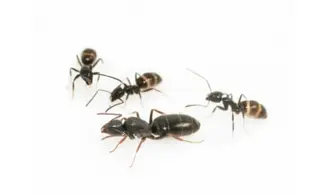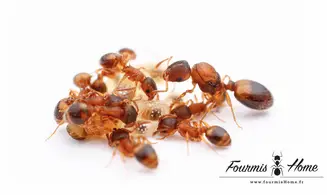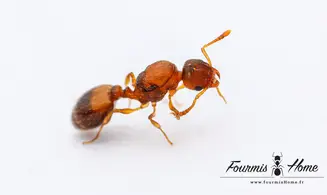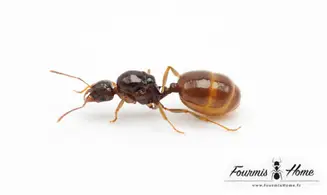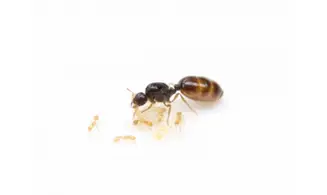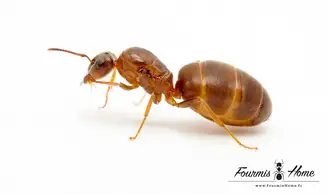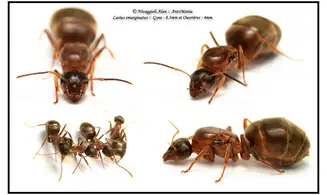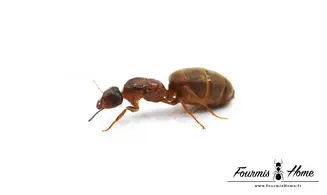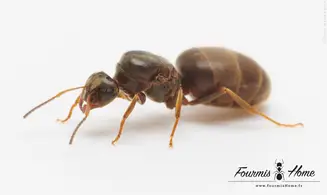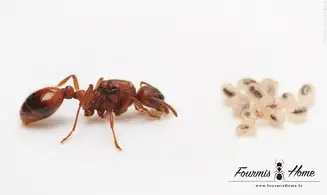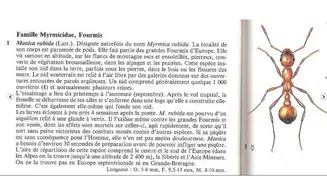Latin name: Lasius brunneus
Taxonomy: Subfamily: Formicinae Tribes: Lasiini
Breeding level: Beginner
Geographical distribution: Europe and North Africa
Habitat: Tree species commonly found in deciduous forests.
Colony form: Monogyne
Queen: Size: 7 - 8mm Color: Black head / thorax, dark brown, light yellowish brown legs
Workers: Size: 3 - 4mm Color: Head / brown gaster-black, chest yellow - yellow-brown
Major: No
Male: Size 5mm Color: Black
Food: Honeydew, but also a lot of small insects like mealworms, fly, mosquito, crickets etc ...
Humidity: Hunting area: 30 - 50% Nest: 50 - 60%
Temperature: Hunting area: 18 - 28 ° C Nest: 21 - 24 ° C
Hibernation: Yes, from mid-November to early March between 8 and 12 ° C
Nest type: Nest with plaster tubes the first year and after reconstituted stone nest.
Description: Lasius brunneus is a shy type of Lasius with pretty color.
Development: Swarming from late June to mid-August
Foundation: Set in a cloister (without food) Development: 30 days from egg to worker (depending on temperature)
Size of the colony: From 20,000 to 40,000 individuals, the queen can reach the age of 20 years.







